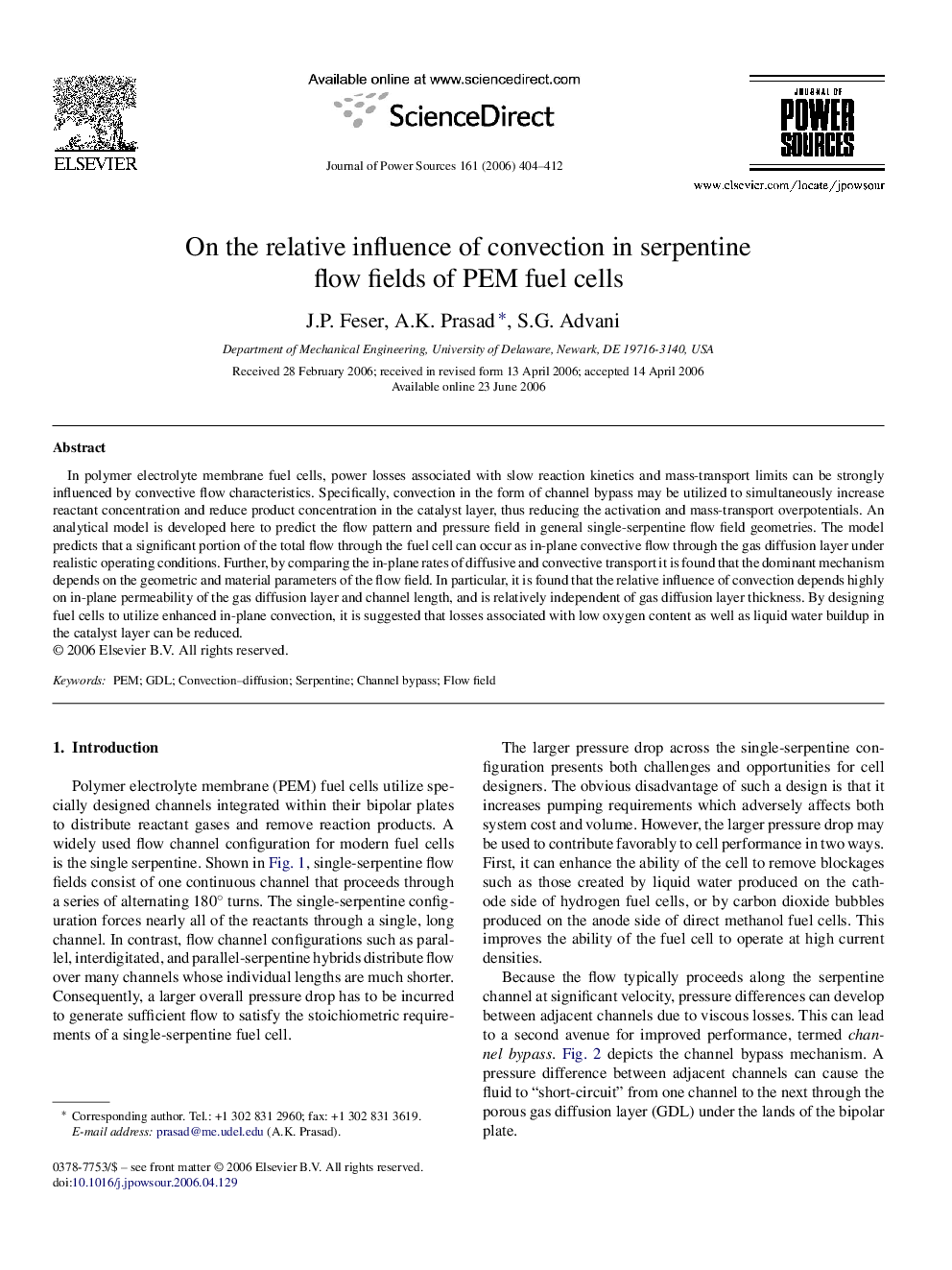| Article ID | Journal | Published Year | Pages | File Type |
|---|---|---|---|---|
| 1287011 | Journal of Power Sources | 2006 | 9 Pages |
In polymer electrolyte membrane fuel cells, power losses associated with slow reaction kinetics and mass-transport limits can be strongly influenced by convective flow characteristics. Specifically, convection in the form of channel bypass may be utilized to simultaneously increase reactant concentration and reduce product concentration in the catalyst layer, thus reducing the activation and mass-transport overpotentials. An analytical model is developed here to predict the flow pattern and pressure field in general single-serpentine flow field geometries. The model predicts that a significant portion of the total flow through the fuel cell can occur as in-plane convective flow through the gas diffusion layer under realistic operating conditions. Further, by comparing the in-plane rates of diffusive and convective transport it is found that the dominant mechanism depends on the geometric and material parameters of the flow field. In particular, it is found that the relative influence of convection depends highly on in-plane permeability of the gas diffusion layer and channel length, and is relatively independent of gas diffusion layer thickness. By designing fuel cells to utilize enhanced in-plane convection, it is suggested that losses associated with low oxygen content as well as liquid water buildup in the catalyst layer can be reduced.
